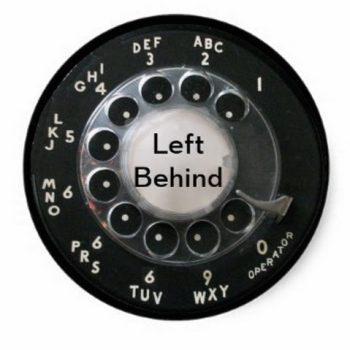We have occasionally discussed the “Stronger Men’s Conference” here over the years, mainly to point and laugh and gawk at the pro-wrestling-meets-pickup-truck-commercial absurdity of it all. (See “Mamas Don’t Let Your Babies Grow Up to Attend the ‘Stronger Men’s Conference’” and “Biblical men, men, men, men, manly men, men, men.”)
 That grifty, money-making conference is just the most extreme example of various white evangelical responses to what has periodically been described as the “crisis” of the “feminization of the church.” Historically, church attendance and participation has been more attractive to women than to men. So Oh Noes!!1! — How can we make church “manlier” and more appealing to men to keep it from a supposed death cycle of feminization? It’s always been an odd panic, one based on choosing to view churches’ apparent success in attracting women as, instead, a threat to men and to masculinity in the abstract. (I suppose that’s related to the same semi-acknowledged guilty-conscience-driven panic white America is now having in realizing that they will soon be a plurality but not a majority.)
That grifty, money-making conference is just the most extreme example of various white evangelical responses to what has periodically been described as the “crisis” of the “feminization of the church.” Historically, church attendance and participation has been more attractive to women than to men. So Oh Noes!!1! — How can we make church “manlier” and more appealing to men to keep it from a supposed death cycle of feminization? It’s always been an odd panic, one based on choosing to view churches’ apparent success in attracting women as, instead, a threat to men and to masculinity in the abstract. (I suppose that’s related to the same semi-acknowledged guilty-conscience-driven panic white America is now having in realizing that they will soon be a plurality but not a majority.)
Anyway, here’s some good news for the organizers of the Stronger Men’s Conference and all of the other manly men who have been fretting for years now about the “feminization of the church”: Their efforts are succeeding. Younger women are leaving their churches, which now seem to be more attractive to younger men.
This is in the news because of a pay-walled Ruth Graham article in The New York Times, which I’ve only been able to read via the excerpts discussed by others. Graham apparently is reporting on data collected earlier this year in polling on “Gen Z,” all summarized here without a paywall by Joel Mathis:
Experts agree: Women have long served as the heart of Christian churches in America. It was often the men who had to be dragged along to services. But now that’s changing.
“Men are staying in church,” Ruth Graham said at The New York Times, “while the women are leaving at a remarkable clip.” Church membership has been dropping in the United States for years, but the exodus is particularly marked among young women: 40% now call themselves “religiously unaffiliated,” while just 34% of young men say the same. How significant is that? For decades before now, research found that “women have been consistently more religious than men,” said the Times. The shift away from that longstanding dynamic could profoundly reshape “family life and politics” in America.
Why are women leaving? Polling shows that two-thirds of Gen Z women “do not believe that churches treat men and women equally,” Daniel A. Cox and Kelsey Eyre Hammond said at the Survey Center on American Life. Conservative churches tend not to let women serve as pastors or in other leadership positions, believing the Bible commands women to “submit” to male leadership. But 61% of Gen Z women identify themselves as “feminist” — a record — meaning this “message is becoming more difficult to digest.”
Back in July, Patricia Miller noted that the causes for women’s shift away from church-attendance are, well, fairly obvious: “Women Are (Still) Fleeing the Church — and the Cause Is (Still) Pretty Clear.” It’s not hard to make a list — a very long, ever-growing list — of statements and actions and choices taken by churches that demonstrate their blunt disdain for women.
Why are younger women not drawn to “the church”? Because they can hear what you’re saying to them. And what you’re saying about them. And they can see what you’re doing — publicly and voluntarily — to harm them.
Graham’s article also prompted some thoughtful responses from Chrissy Stroop (“The Remarkable Religious Disaffiliation of Young American Women and What it Means for the Future“) and Ahmad Greene-Hayes (“The Overwhelming Whiteness and Increasing Maleness of U.S. Churches Isn’t an Accident — It’s a Selling Point“).













